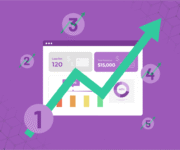The digital lending segment grew from 9 billion USD in 2012 to almost 150 billion in 2020. It is one of the fastest-growing fintech segments and is expected to reach a value of approximately 350 billion USD in 2023 in India.
Factors like increasing digital adoption and the difficulty of accessing credit through traditional banking channels have fueled the growth of digital lending across the country.
Against the backdrop of this phenomenal growth and measures taken by RBI to regulate and facilitate digital lending processes, many wonder what does 2023 hold for the market segment?
In this blog, we will explore this topic in detail.
2022: A Year of Transformation
The year 2022 brought about many significant changes in the fintech space. Multiple factors like the resilience of Indian markets, enhanced capabilities of the lenders, and higher acceptance rates among users contributed to the changing landscape of digital lending services.
New guidelines introduced by the RBI in 2022 added to the stability of the fintech segment. RBI prohibited loading credit lines into non-bank prepaid instruments (PPIs) like wallets and prepaid cards, paving the way towards recognising the fintech sector as separate from traditional banking.
Further, the RBI also introduced policies relating to data protection, grievance redressal, prepayment of the loan, and reporting for the lenders and borrowers to ensure that all transactions are carried out ethically and per regulations.
2023: An Year of Opportunities for Digital Lending
Digital lending will likely gather further momentum in 2023 and make borrowing even more convenient for consumers.
Despite the expected tightening monetary cycle globally, India’s resilience and strong macroeconomic fundamentals will keep it relatively insulated from the economic slowdown.
Below we discuss a few digital lending trends likely to emerge this year.
1. Expanded Role of AI and ML
Emerging technologies like Artificial Intelligence (AI) and Machine Learning (ML) will significantly impact the digital lending market. Chatbots and automated responses have already simplified communications; lenders leverage real-time responses from prospective customers to curate data and offer customers personalised solutions.
AI and ML can also aid banks and NBFCs in identifying the issues in the digital lending space and assessing their client’s requirements. These techniques will help in improving efficiency and reducing the turnaround time.
Most lenders already use AI and ML, and fintech tools for a range of backend operations and customer-facing services, including credit assessments, risk forecasting, and regulatory compliance. Digital lenders are increasingly adopting techniques like digital onboarding using Aadhar and Video Customer identification Processes (V-CIP), streamlining processes and adding acceleration- a trend that is likely to sustain.
2. Co-Lending Will Gain Ground
Co-lending is all set to gain popularity in 2023. This lending model brings together banks and NBFCs to offer credit to customers. The banks with access to a large pool of funds collaborate with NBFCs, which have vast networks that reach the remotest parts of the country. Banks and NBFCs must collaborate with digital lenders to make this model work.
In this model, banks and NBFCs split the loan in an 80:20 ratio; the NBFCs’ stake of 20 per cent ensures that they do not generate inferior quality loans. Last year saw many banks and NBFCs entering strategic co-lending partnerships; this year will experience banks adding more partners to enhance their reach.
For example, the Central Bank of India formed a co-lending partnership with Shapoorji Pallonji Finance in 2022. The beginning of the year saw them tying up with another NBFC, Mamta Projects (MPPL), to offer loans to micro, small and medium enterprises (MSME) at competitive rates.
Co-lending also plays a vital role in improving financial inclusion, so it is likely to become more mainstream and widely accepted in 2023.
3. Imposition of Additional Regulations
Like the previous year, 2023 will also witness the regulator implementing policies to protect customer interests and ensure lending is carried out only by Regulated Entities (REs). The RBI will continue to focus on policies that encourage responsible practices, standardised communications to borrowers and weed out unscrupulous players from the market.
All players in the digital lending ecosystem will make the necessary changes to align with these objectives laid down by the RBI.
2023 could also bring about growth and success for licensed NBFCs, and fintech companies focused on providing credit to a large chunk of under-served or unserved borrowers. Enhanced regulations will encourage digital lenders to focus on growth on a structural level while mitigating the risk factors.
Another positive step towards a more regulated digital lending market could be the creation of self-regulatory organisations, which will lead to more accountability for consumer rights from regulated firms.
In Summary
The leaps and bounds made in the financial technology domain have fuelled the growth of the digital lending space in the last few years. Digital lending has allowed customers from all walks of life and all corners of the country to access credit, while fintech solutions have ensured efficiency in operations.
In 2023, proactive players in this ecosystem will benefit from using suitable fintech tools and can grow seamlessly.
Finezza: AI-driven Growth for Digital Lenders
Finezza is an end-to-end lending solution that eases financial analysis with a suite of customised tools and analytics to complement the decision-making processes of any new-age, growth-oriented lending organisation.
Our solutions, like the Loan Management System, can help FIs run their operations smoothly and efficiently and manage multiple partners.
Book your demo now!




Leave a Reply